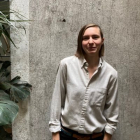Support strong Canadian climate journalism for 2025
This story was originally published by High Country News and appears here as part of the Climate Desk collaboration.
As the temperature on an early April afternoon crept above 80 F, Cruz Marquez, a member of the Salton Sea Community Science Program, stood at a folding table under a blue tent scrubbing a small glass vial with the cloth of his T-shirt. The vial, which held 20 millilitres of water from the nearby Salton Sea, had to be clean before he inserted it into a photometer to identify the water’s contaminant levels.
Less than a decade earlier, the beach where Marquez stood lay under the Salton Sea, California’s largest lake. Over the last 25 years, the Salton Sea has lost a third of its water due to an over-allocated Colorado River. As it shrinks, the sea’s salts plus pollutants from agricultural runoff reach higher concentrations. All those extra nutrients fuel algae blooms that then decay in the sulfate-rich sea, resulting in a rotten-egg smell that can extend for miles. As temperatures rise and the water retreats further, locals suspect that the contaminated sediments in the exposed lakebed are worsening air quality; the area’s childhood asthma rate is one of the highest in the state.
But for several years, no government agency has monitored contaminant levels in the sea. Meanwhile, most academic research focuses on the dust from the drying lake bed. And even where data exists, it can be hard for the public to access. Now, the Salton Sea Community Science Program is working to remedy this.
The project is a partnership between academic scientists and community scientists like Marquez, most of them local students majoring in the sciences. Ryan Sinclair, a professor of environmental microbiology at Loma Linda University near San Bernardino, helped found the project. Sinclair had previously organized a balloon-mapping project, in which he invited community members to help measure the sea’s receding shoreline using a camera mounted on a balloon.
But he realized there was more work to be done. With support from the American Geophysical Union, he partnered with the non-profit Alianza Coachella Valley and oceanographers from UC-San Diego. They began to hire and train community scientists, the term the team prefers to “citizen scientists,” because U.S. citizenship is not required to participate in the work.
The more than 35,000 people who live near the Salton Sea include thousands of farmworkers. Some of them are undocumented, and some are members of Mexico’s Indigenous Purépecha community and may not be proficient in either English or Spanish. Data from the U.S. Census Bureau shows that the unincorporated shoreline communities of Thermal, Oasis, North Shore and Mecca, all more than 95 per cent Latino, have a median household income of less than $30,000 per year. Nearly half of the residents of the Torres Martinez Desert Cahuilla reservation, which also borders the sea, live below the federal poverty line. Much of the local housing consists of aging manufactured homes that don’t keep out dust and are prone to power outages during the extreme summer heat.
The community scientists have watched the sea change firsthand. “When my dad first came to the U.S., he had the opportunity to fish with his uncles at the Salton Sea. He talks about it every time we pass by, and when we go visit Mexico, they reminisce about it,” said Marquez, who is originally from La Quinta, California, northwest of the sea. “So, it’s a sad thing that I didn’t get to have that experience.”
Marquez, 27, graduated from the University of California-Riverside during the COVID-19 pandemic. When he’s not measuring nutrient levels in seawater, he tends bar at a hotel near his hometown. “Between last year (and this year), you can see how much the water has receded,” he said. “I can only imagine where it’s going to be in five years if nothing is done.”
The April workday began with the scientists collecting water samples, filling screw-top plastic flasks at two algae-filled inlets where water drained into the sea from nearby date and citrus groves. A smaller group launched an inflatable motorboat toward four sites in the sea, where they collected additional samples and used a water-quality sensor to measure indicators like pH and dissolved oxygen.
Back on land, each community scientist handled a different nutrient, testing the samples for nitrate, sulfide, sulfate, ammonia and phosphate, all of which are found in high levels in the sea owing to agricultural runoff. Sulfate and sulfide are part of the basin’s geology, but appear in even higher quantities because the irrigation water causes them to leach out of the soil and into the sea. The scientists used long glass pipettes to siphon water from the sampling flasks into their vials, filling a control sample and two replicates for each nutrient and adding tablets that corresponded to the vials assigned to each replicate. When Marquez did this, the water in his vial turned a bright purple, which allowed the photometer to measure its nitrate content.
Once they were ready, they inserted their vials into the photometer. They selected a nutrient for the machine to read and, within seconds, its small LCD screen revealed the concentration, which they wrote down. The scientists say that eventually the data could be used to change state policy — and protect the sea’s ecosystem and the residents’ health. They must work quickly, though. “We’re not at the point where it’s too late,” said Marquez, “but we’re getting close.”
After all the day’s data was collected, they uploaded it to saltonseascience.org, designed by local residents, web developers and the community science team. Aydee Palomino, a project manager with Alianza, emphasized that making the data easily available is part of the program’s mission: It allows residents to see whether science backs up their speculations about the impacts of the declining air and water quality.
“Their experiences deserve to be validated by scientific data,” she said.






Comments